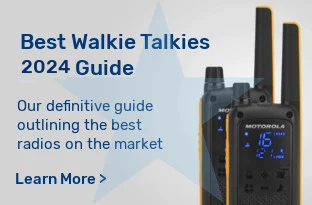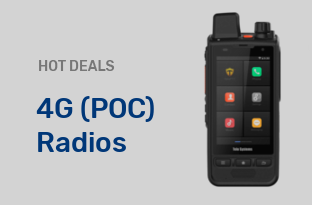What are the Differences Between Two Way Radios and 4G Radios?
As technology advanced, walkie talkies, often referred to as two-way radios, continued to be a dependable and constant mode of communication. The first Morse code messages were sent over radio in the late 19th century, beginning radio communication.
Early in the 20th century, the first "walkie talkie" was created for military usage. Since that time, two-way radio technology has only become better, providing people with solid communication support for nearly a century.
Two-way radio and mobile technology have combined in recent years to enable push-to-talk communication via cellular networks. These devices are referred to as 4G radios.
So what is a 4G Radio?
Where radio frequencies are used by two-way radios to broadcast. Push to Talk Over Cellular (PTTOC), another name for 4G Radios, makes use of both Wi-Fi and mobile networks. They will constantly locate the strongest signal thanks to the multi-network roaming Sims in the radios.
Set Up
Depending on the device, there are many set up choices available. Those with a screen have two choices. Whether to lock the smartphone, limiting app use, or to grant full access to all Android capabilities. There is a 12-month subscription option for the data.
Mobile Apps
Some 4G Radio manufacturers also offer a mobile app, which allows users to speak with people using their phone. A great option for businesses with employees who work in various settings. Allowing rapid communication across various devices and platforms.
Appearance
Many 4G Radios can have a similar appearance to a traditional two way radio, offering just the PTT feature. Whereas most will have familiar features to an android device with a robust and rugged casing.
How are they different to Two Way Radios?
There are many similarities and difference between the two, the main difference being how they operate.
Two Way Radios
Operating over Radio frequencies, Two Way Radios don’t require the use of a mobile network to transmit. Meaning they’ll provide a reliable form of communication to users working in remote locations.
Unlicenced
There are different options for two way radios available, ones commonly used by members of the public and small businesses are licence free.

Licenced
Licenced radios will be more appropriate for business professionals who need more range and security.
They do need an Ofcom licence to run, which gives users a dedicated frequency of their own. There is no restriction on how many radios a person may own under one Ofcom licence, and the licences are valid for 5 years.
How do I know what radio will work best for me?
The location of operation is the biggest factor when comparing Two Way and 4G Radios. Anywhere the user has access to mobile network data, they will be able to communicate efficiently.
This doesn’t mean 4G Radios are a replacement for traditional two way radios. Two Way Radios will provide a robust solution for users working in remote areas, or anywhere with little to no mobile service.
Where can I buy these radios?
Here at Radio Solutions, both 4G and traditional two way radios are available to hire or purchase. With an expert team at hand to provide assistance and advise the best solution for you.
Give the team a call on 01745 335 811 to discuss your requirements, or send a message through the LiveChat pop up on the website.


























